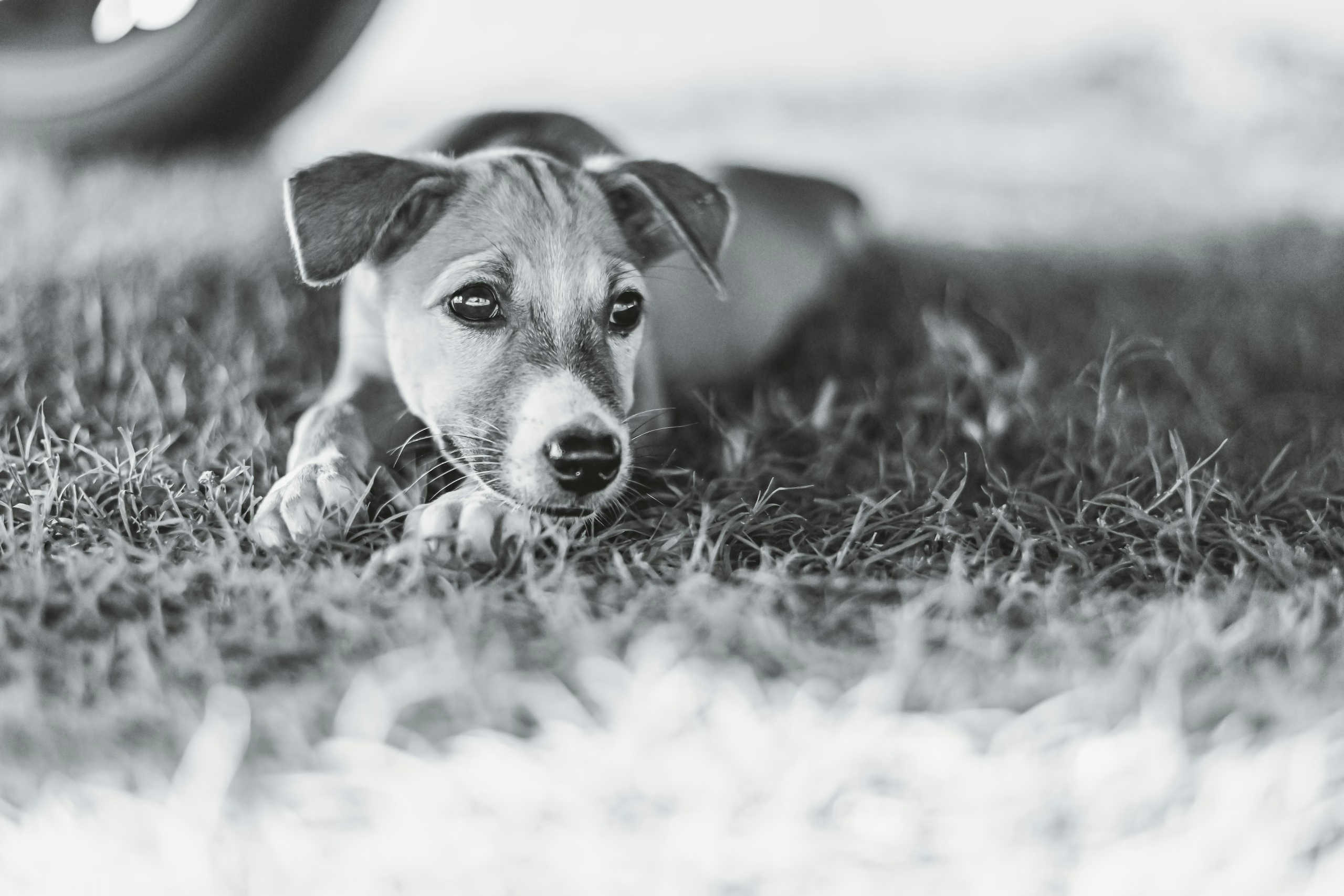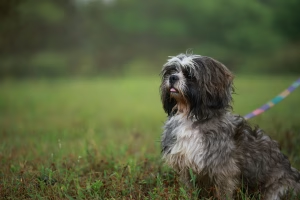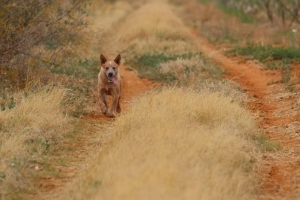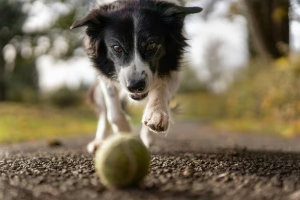
When people search dog trainer near me in London, they’re usually at the point where their dog’s behaviour is no longer just a small quirk. It’s spilling into daily life. Barking at visitors, pulling on the lead, or struggling to be left alone are often the obvious issues that push people to seek help. But the truth is, long before these behaviours become unmanageable, dogs show subtle signs of anxiety that often go unnoticed. If these signs are missed, they can compound over time and lead to more serious problems.
Why Spotting the Early Signs Matters
Dog anxiety rarely appears overnight. It builds gradually, layer by layer, until one day it looks like reactivity, separation anxiety, or destructive behaviour. If you know what to look for early on, you can prevent a lot of stress — both for your dog and for yourself.
The challenge is that subtle signs often don’t look like “bad behaviour”. They look small, harmless, or even a bit cute. A dog licking their lips, yawning when they’re not tired, or leaning heavily on their owner might not cause concern at first. But these are all signals of inner tension. When those signals are ignored, the dog learns that their communication isn’t being heard, and their stress escalates.

The Common Subtle Signs of Anxiety
Here are some of the most common ways dogs reveal discomfort before it turns into bigger behaviour issues:
- Lip licking: Not after eating, but in random moments, often when nothing tasty is around.
- Yawning: A classic calming signal. If your dog yawns during training, grooming, or when a stranger approaches, it’s often stress.
- Pacing: Moving restlessly from one spot to another, often in circles or back and forth.
- Clinginess: Always needing to be pressed against you, unable to settle independently.
- Shaking off: Like they’ve just come out of water, but indoors, after a mildly stressful interaction.
- Staring: Not in an aggressive way, but watching intently, often as a sign of hyper-vigilance.
- Displacement behaviours: Scratching, sniffing, or grooming suddenly and out of context.
Each of these signals is your dog’s way of saying, “I’m not fully comfortable here.”

How Anxiety Compounds
Anxiety doesn’t sit still. A dog experiencing low-level tension day after day becomes more sensitive. Their threshold lowers. A noise, another dog on the street, or even the postman dropping letters can suddenly become overwhelming.
Think of it like a bucket slowly filling. Every little trigger — the sound of the hoover, a visitor walking in, a dog across the road — adds water. If nothing drains the bucket, it eventually spills over into barking, lunging, chewing, or retreating. This is often what people label as “reactivity” or “naughtiness”. But it’s really the overflow of compounded anxiety.

Why Dogs Struggle to Reset Themselves
Unlike humans, dogsdon’t have the same ability to reason themselves down from anxiety. We can tell ourselves, “It’s just fireworks, I’m safe.” A dog can’t. Once arousal takes hold, their system stays on high alert until something external brings them back down. That’s where leadership, structure, and guidance come in. Without it, a dog can live in a heightened state for hours or days, never fully resetting.

The Role of the Environment
One of the strongest drivers of anxiety is the environment. A busy household, too much noise, constant visitors, or even the absence of clear boundaries can all contribute. Dogs thrive on clarity. If they don’t know what their role is, or if they feel responsible for things outside their control (like protecting the house or their owner), anxiety grows.
This is why addressing anxiety isn’t just about treats or training games. It’s about creating an environment where the dog feels safe, supported, and free from responsibility that isn’t theirs to carry.

Leadership and Emotional State
Many people believe leadership means being strict or dominant. In reality, true leadership is calm, consistent, and reassuring. If your dog is anxious, they’re scanning the world for signs of safety. If you panic, they panic. If you stay calm and take charge, they relax into your lead.
The emotional state you bring into interactions has more influence than most people realise. An anxious dog often mirrors the tension of their owner. Change the owner’s state, and the dog often follows.

What Happens If Anxiety Goes Unchecked
If subtle anxiety is missed or ignored, here’s how it often develops:
- Hyper-vigilance: Constant scanning, unable to relax.
- Sensitivity: Overreacting to smaller and smaller triggers.
- Reactivity: Barking, lunging, or snapping at people, dogs, or noises.
- Entrenchment: The behaviour becomes a habit, harder to unpick.
- Generalised anxiety: The dog struggles in multiple settings — home, walks, visitors, and more.
By the time a dog reaches step three or four, most owners reach out for help. But the truth is, prevention at step one is far easier and far kinder.

Helping a Dog With Anxiety
Addressing anxiety starts with three key areas:
- Leadership: Show your dog through calm direction that you are in charge of protection and decision-making. This relieves them of roles they can’t handle.
- Environment: Reduce unnecessary stressors, structure the day, and manage exposure to overwhelming settings.
- Behavioural guidance: Step in early when your dog shows subtle signs, redirecting them to calmer states rather than waiting for escalation.
Sometimes this involves professional help. A qualified dog trainer or behaviourist in North London can observe patterns you might not see and give you a structured plan to guide your dog back to calm.

Why Search for “Dog Trainer Near Me London”?
When you look up dog trainer near me London, you’re not just looking for obedience lessons. You’re often looking for someone who can step in before small problems become large ones. A professional who understands anxiety, not just commands, can make the difference between a dog who learns to cope and a dog whose world gets smaller and smaller.
Living in a city like London brings extra challenges for dogs: noise, crowded pavements, narrow streets, and constant stimulation. Without the right guidance, even the most balanced dog can become overwhelmed. That’s why local, in-person help matters.

A North London Story: Daisy on Hampstead Heath
When I first met Daisy, a two-year-old spaniel living near Hampstead, her owners were at their wits’ end. Walks on Hampstead Heath had become exhausting. What should have been a relaxing break in nature had turned into a stressful routine of constant barking and pulling. Daisy reacted to every dog she saw, lunging at the lead and barking furiously until the other dog was out of sight.
On the surface, it looked like “reactivity”. But when I slowed things down and really observed Daisy, the picture became clearer. Her anxiety didn’t begin when she barked. It began much earlier, in quieter ways her owners hadn’t noticed.
As we walked, Daisy’s eyes darted constantly, scanning for movement on the paths ahead. When a jogger passed us, she licked her lips and yawned — both subtle stress signals. A cyclist went by and she shook herself off as though she had just come out of water. Then, when a dog appeared on the horizon, she froze, her body stiff and tail wagging rigidly. By the time the dog reached us, her stress bucket had overflowed, and barking was inevitable.
Her owners were surprised. “We thought she was just excitable,” they told me. Like many people, they only saw the big behaviour, not the whispers that led up to it.
We began working on building Daisy’s sense of safety and changing her expectations on walks. First, I guided her owners to take control of Daisy’s scanning. Each time her eyes locked onto the horizon, they calmly redirected her attention back to them. Not with panic, not with constant talking, but with quiet signals that showed Daisy someone else was in charge of keeping an eye out.
Next, we tackled the pacing and lip licking. Instead of ignoring those small signs, her owners learned to step in early — pausing, helping Daisy reset, and showing her that she didn’t need to push through on her own. The focus was on helping Daisy stay under threshold, rather than always dealing with an explosion at the peak of her stress.
As the weeks went by, Daisy began to relax into her owners’ leadership. She realised she wasn’t responsible for every passing dog, jogger, or cyclist on Hampstead Heath. With each success, her confidence grew. The barking didn’t vanish overnight, but it softened. The distance at which she reacted reduced. Eventually, walks that had once been frantic became calmer, steadier, and enjoyable again.
One moment stood out. We were standing near the pond, where dogs often gather and play. Daisy spotted another dog bounding toward the water. Her body stiffened for a second, but instead of exploding into barking, she looked up at her owner. It was as if she was asking, “What do I do?” Her owner gave a calm direction, and Daisy settled. It wasn’t perfect, but it was progress — the kind of progress that changes the whole relationship.
For her owners, Hampstead Heath went from being a place they avoided to a place they loved again. For Daisy, it became a place where she could enjoy being a dog without the constant burden of responsibility.
This story is a reminder that the subtle signs matter most. If you’re walking your dog in North London — whether it’s Finsbury Park, Clissold Park, or Hampstead Heath — and you notice lip licking, yawning, pacing, or clinginess, don’t brush it off as nothing. These are your early warning lights. And the sooner you act, the easier it is to help your dog find calm.

Final Thoughts
Subtle anxiety is easy to miss, but it is the root of so many bigger problems. If you can learn to see the small signs — the lip licks, the yawns, the clinginess — you can change your dog’s future before anxiety takes hold.
And if you’re in North London and find yourself searching dog trainer near me, know that the earlier you act, the easier the journey will be. Helping your dog find calm is not just possible — it’s essential for both of you.
Book your private consultation today and start building the calm, confident bond you have always wanted.


